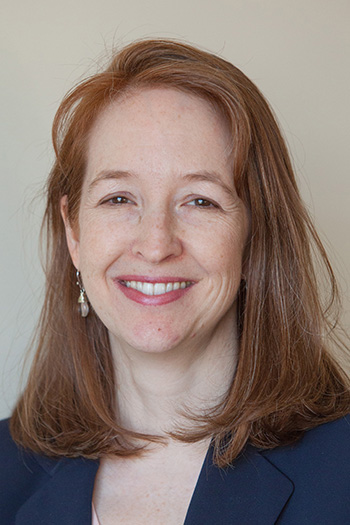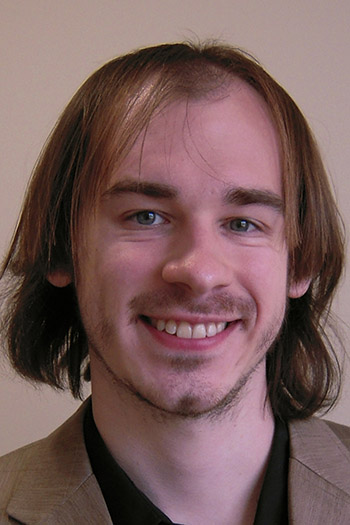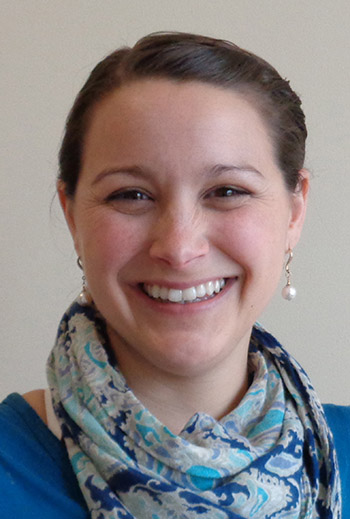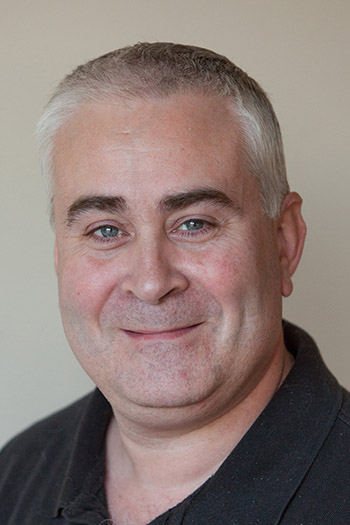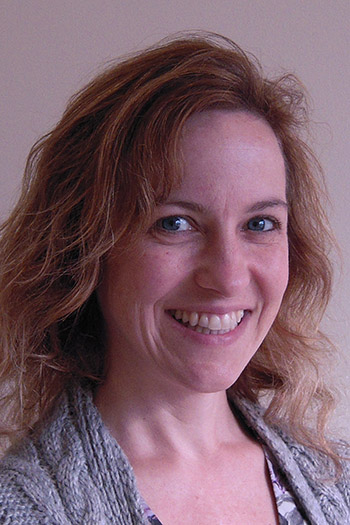- Apply
- Visit
- Request Info
- Give
Eastern’s early childhood education center fills ‘virtual’ void for teacher prep programs
Written by Michael Rouleau
Published on December 22, 2020
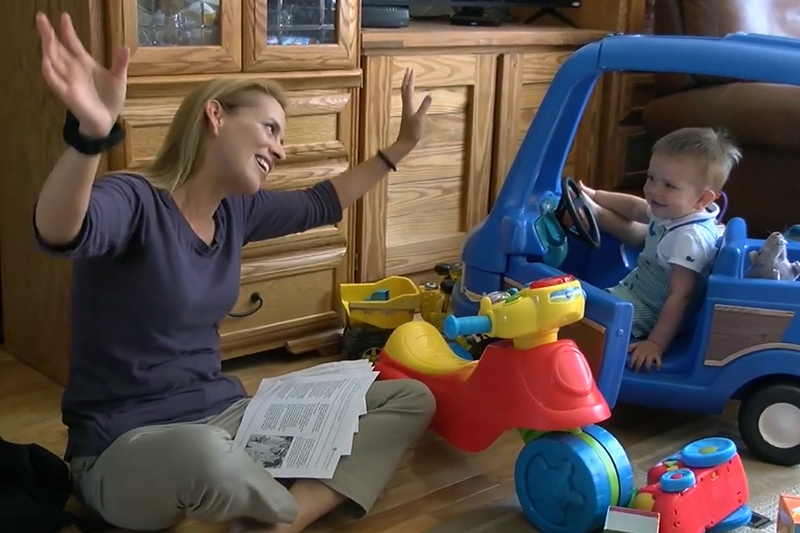
The Center for Early Childhood Education (CECE) at Eastern Connecticut State University has emerged as an invaluable resource for the early childhood education field during the COVID-19 pandemic. As teacher preparation programs have shifted online, institutions from Connecticut and beyond are utilizing the CECE’s large collection of video resources like never before.
“When schools shut down in March, teacher education programs were left scrambling,” said CECE Director Julia DeLapp. “Students were suddenly without placements where they could observe children in real time, and faculty had to figure out how to convert their in-person classes to distance learning in a way that was still meaningful.”
Fortunately, Eastern has a vast library of authentic early-childhood videos — short clips and finished productions — and is being tapped regularly by early education faculty and students during the pandemic. Over the past 10 years, the CECE has produced more than 130 videos — available on YouTube — about teaching practices and research findings in the field of early childhood education. A separate video clip library, containing nearly 500 filterable moments, can be accessed through the CECE’s website.
“While watching a video is in no way equivalent to being in an actual early childhood classroom,” said DeLapp, “it is better than just reading about children’s behavior in a textbook or hearing a professor lecture about it on Zoom.”
The CECE’s online videos have experienced a boom in viewership since March when remote learning and social distancing mandates closed schools and childcare facilities. From a typical mid-semester peak of around 2,000 daily views, viewership jumped 150 percent to a peak of 5,000 daily views in April 2020 during the spring semester, followed by a fall semester peak of more than 4,000 daily views from September through November.
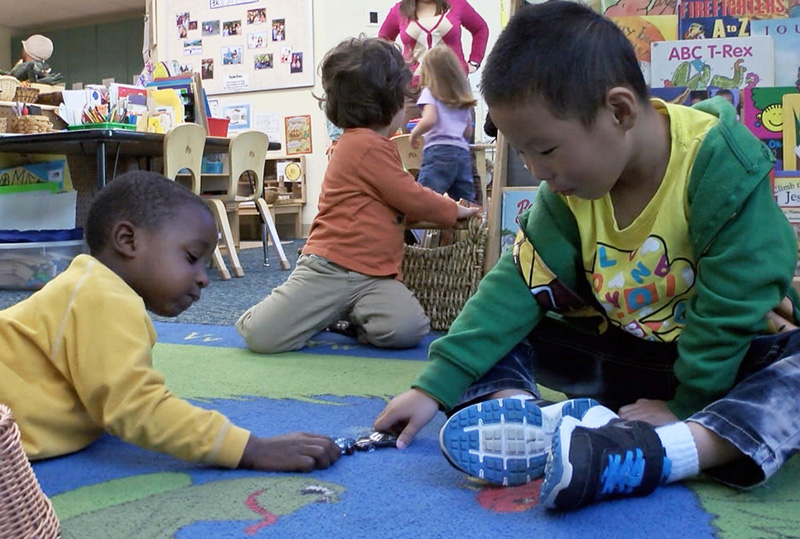
As the videos are geared toward practicing and aspiring early childhood professionals, the viewership coincides with the flow of the academic year, rising as semesters get underway and dropping during final exams and the winter and summer breaks. While this pattern has persisted through the pandemic, the growth in views during peaks is unlike anything the center’s YouTube channel has seen since it was established in 2013.
“I honestly am not sure how I would have made it through my early childhood education courses during the pandemic without these videos,” said Carol LaLiberte, professor and early childhood education coordinator at Asnuntuck Community College.
“Teachers-in-the-making need to see and respond to real children and doing so in-person was not an option, but without these videos I don’t know what could have replaced this experience. They get to see children in various scenarios but they also get to see best practices and hear conversations about these as well. The videos are all so well organized and since they are fairly brief, they fit in a virtual class perfectly.”
It took five years for the CECE’s YouTube channel to hit 1 million views, and another 21 months to reach 2 million. This month the channel is poised to reach 3 million — 13 months after hitting 2 million. Over the summer, the channel earned its 10,000th subscriber, and has since garnered 2,500 more.
The CECE, which utilizes faculty and student researchers who team up with Eastern’s on-campus preschool, is an educational resource for institutions across the United States and around the world. Its YouTube channel’s international viewership is largely from Canada, United Kingdom, Australia, India, Philippines and Singapore.
Regarding the CECE videos’ value to institutions across the United States, LaLiberte recounted her recent experience as a textbook reviewer with colleagues from around the country. “We were asked about resources we use in our classes and I was shocked that every single one of them mentioned the Eastern videos as an invaluable resource, before, during and after the pandemic. They are widely recognized as filling a gap in our educational presentations to students.”
Gail Omoto is the senior educational research and writing associate at Windward Community College in Hawaii. “I have used the videos produced by Eastern’s CECE extensively, and believe they are a valuable resource for our early childhood community and beyond.”
Among her efforts to support home-based childcare, Omoto creates newsletter content, develops trainings and leads coaching programs. “(These) videos are among the first sources that I consult in the development of these resources,” she said. “I have found them to be professionally done, high quality and easy to understand.”
Anne Ryan of the College of Education at St. Petersburg College in Florida relies on CECE videos as well. “The amazing thing about the CECE site is that there are materials relevant to the content in all of our courses,” she said, praising the production quality and corresponding transcriptions and reflection questions. “We use several as ‘guest lecturers.’ We use all the materials, from classroom videos to tips for teachers.”
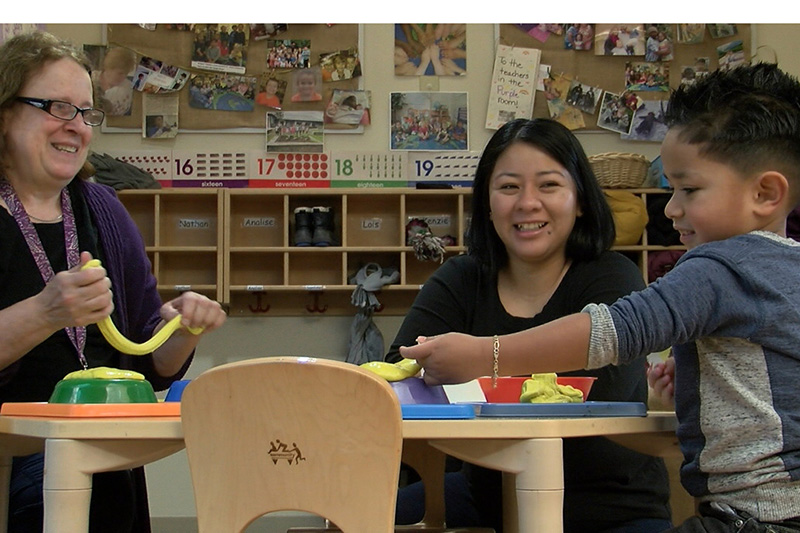
The CECE’s most popular videos include “Observing Young Children,” which has been viewed 400,000 times and features professor Sudha Swaminathan; “The Importance of Play,” which has 219,000 views and features professor emeritus Jeffrey Trawick-Smith; and “Supporting English Language Learners in the Preschool Classroom,” featuring professor emerita Ann Anderberg.
Other favorites include videos on the CECE’s annual study of educational toys. New additions to the library include “Affirming Children’s Linguistic Identity” featuring Professor Elena Sada and “Learning about Family Culture” featuring Professor Tanya Moorehead.
“They all serve different purposes,” said LaLiberte. “Sometimes I want my students to be reflective, so I show them a video where there is not an analysis piece included. Other times, I want them to hear from those in the field and to learn from them. The videos are live, real interactions instead of rehearsed scenes. They bring the real life of the early childhood education classroom into my students’ worlds.”
“It’s nice to know that we’ve been a useful resource for the field during a very difficult time,” said DeLapp. “This has come about because of all the work we’ve been doing over the past 10 years conducting research and developing high-quality, educational videos.”
For a listing of videos and supplemental materials, as well as the center’s video clip library, visit the CECE website at https://www.easternct.edu/center-for-early-childhood-education/index.html, or visit the YouTube channel at https://www.youtube.com/user/EarlyChildhoodVideos.



